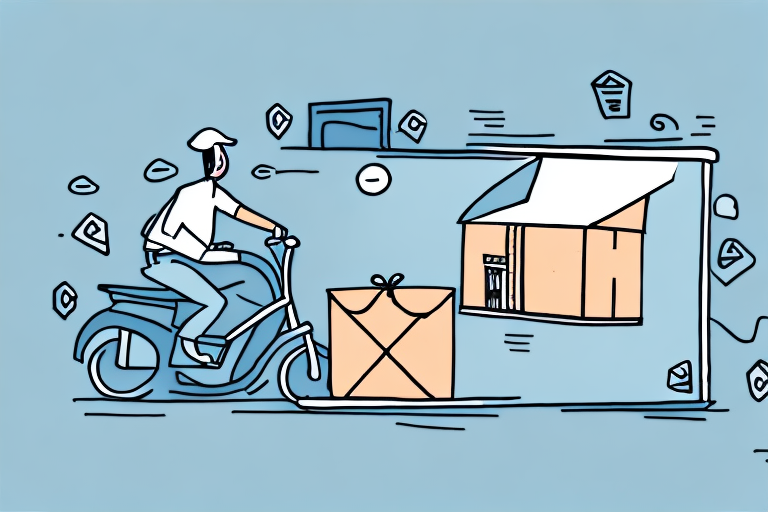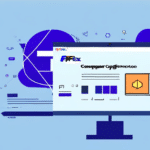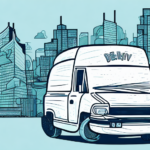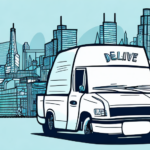Understanding No Contact Delivery: Ensuring Safety and Convenience in the Modern Era
The COVID-19 pandemic has revolutionized the way businesses operate globally, accelerating the adoption of safety protocols to protect both employees and customers. One significant adaptation is the implementation of no contact delivery—a method where goods and services are delivered without any physical interaction between the customer and the delivery driver. This approach not only addresses immediate health concerns but also reshapes the future of the delivery industry.
The Significance of No Contact Delivery During and Beyond the COVID-19 Pandemic
COVID-19, a highly contagious virus, primarily spreads through respiratory droplets released when an infected individual talks, coughs, or sneezes. Physical distancing has thus become paramount in mitigating the virus's transmission. No contact delivery emerges as a strategic solution, minimizing face-to-face interactions and enhancing public health safety.
According to a CDC report, reducing physical contact is crucial in controlling the virus's spread. No contact delivery not only curbs potential transmission but also sustains essential business operations during crises.
Moreover, this delivery method fosters peace of mind for both customers and delivery personnel. Customers receive their orders without the anxiety of potential exposure, while delivery drivers can perform their duties with reduced health risks.
Looking forward, no contact delivery is poised to become a staple in the delivery sector, offering a convenient and secure option for consumers who prefer minimal interaction.
Operational Mechanics of No Contact Delivery: A Comprehensive Guide
The no contact delivery process is streamlined to ensure safety and efficiency. Here’s a step-by-step overview:
- Order Placement: Customers place orders online or via phone.
- Selection of Delivery Method: Customers choose the no contact delivery option during checkout.
- Order Preparation: The delivery driver receives the order and prepares the items for dispatch.
- Driver Notification: The driver alerts the customer of their arrival through text, phone, or email.
- Drop-off: The driver places the order at the customer's doorstep.
- Safety Distance: The driver steps back at least 6 feet, waiting for the customer to retrieve their order.
- Completion: After the customer retrieves the order, the driver leaves the premises.
This method not only reduces physical interactions but also enhances operational efficiency. Many businesses have adopted additional safety measures, such as mandating masks and gloves for delivery drivers and sanitizing delivery vehicles and packages, thereby adding layers of protection for all parties involved.
Benefits of No Contact Delivery for Customers and Delivery Personnel
No contact delivery presents numerous advantages, enhancing the experience for both consumers and delivery drivers:
- Minimized COVID-19 Exposure: By eliminating direct contact, the risk of virus transmission is significantly reduced.
- Enhanced Convenience: Customers can receive their orders without leaving their homes, saving time and reducing exposure risks.
- Flexible Delivery Options: Customers can opt to have orders left at their doorstep, accommodating various schedules and availability.
- Business Continuity: This delivery method enables businesses to maintain operations during lockdowns, providing job security for workers and supporting the economy.
- Environmental Sustainability: Reduced packaging and consolidated deliveries contribute to lower waste and a smaller carbon footprint.
- Promotion of Cashless Transactions: Contactless payments enhance security and convenience, aligning with modern consumer preferences.
These benefits not only address immediate health concerns but also introduce long-term improvements in customer satisfaction and operational efficiency.
Implementing No Contact Delivery: Steps for Restaurants and Retailers
Adopting no contact delivery is straightforward for businesses seeking to enhance safety and customer satisfaction:
- Select the Delivery Option: Ensure that the no contact delivery option is available during the checkout process, whether online or via phone orders.
- Clear Communication: Inform customers about the no contact delivery process and any specific instructions they need to follow.
- Operational Adjustments: Train staff and delivery personnel on the new protocols to ensure seamless implementation.
- Utilize Technology: Implement reliable notification systems to inform customers of delivery statuses and driver arrival times.
It's essential for businesses to provide detailed instructions, such as specifying drop-off locations or providing contact numbers, to facilitate smooth and efficient deliveries.
Enhancing the No Contact Delivery Experience: Best Practices
To maximize the effectiveness and safety of no contact delivery, consider the following tips:
- Choose Reputable Delivery Services: Opt for delivery partners with strong safety protocols and positive customer reviews.
- Ensure Availability: Be present or designate a safe spot for order retrieval to prevent delays.
- Opt for Digital Payments: Use contactless payment methods to minimize physical interactions.
- Practice Hygiene: Wash hands thoroughly after handling delivered items, especially if consuming food or beverages.
- Maintain Safe Distances: Keep a minimum of six feet away from delivery personnel during the drop-off process.
- Provide Clear Instructions: Leave notes or specific instructions to guide delivery drivers, ensuring accurate and contactless deliveries.
Adhering to these guidelines ensures a secure and efficient delivery process, enhancing overall customer satisfaction and safety.
The Future Trajectory of No Contact Delivery: Trends and Innovations
No contact delivery has established itself as a significant trend, with potential implications for the future of the delivery industry:
- Technological Advancements: Innovations such as drone and robot deliveries are emerging, promising faster and more efficient no contact deliveries.
- Sustainability Initiatives: Reduced vehicle emissions and optimized delivery routes contribute to environmental conservation efforts.
- Enhanced Customer Preferences: The demand for safety and convenience is likely to sustain the popularity of no contact delivery beyond the pandemic.
- Workforce Considerations: As automation increases, there may be shifts in employment dynamics within the delivery sector, necessitating workforce retraining and support.
These trends indicate that no contact delivery is not merely a temporary solution but a transformative force shaping the future of logistics and customer service.
No Contact Delivery's Impact on the Food Industry
The food sector has been significantly transformed by the adoption of no contact delivery:
- Business Model Adaptations: Restaurants have expanded their online presence and streamlined delivery operations to meet customer demand.
- Increased Revenue Streams: Many establishments have reported revenue growth attributed to enhanced delivery services.
- Improved Hygiene Standards: There is a heightened focus on tamper-evident packaging and sanitation practices to ensure food safety.
These changes have not only helped restaurants navigate the challenges posed by the pandemic but have also set new standards for food safety and delivery efficiency.
Support for Small Businesses Through No Contact Delivery
No contact delivery has been instrumental in sustaining small businesses during challenging times:
- Maintaining Customer Base: By pivoting to online sales and delivery, small businesses have continued to serve their customers despite physical restrictions.
- Operational Challenges: Implementing new delivery systems requires investment in technology and staff training, presenting hurdles for some small enterprises.
- Long-term Benefits: The ability to offer no contact delivery is likely to remain a competitive advantage, providing ongoing benefits even post-pandemic.
While the transition poses initial challenges, the resilience and adaptability of small businesses have been crucial in overcoming these obstacles, ensuring their longevity and success.
Shifting Consumer Preferences Towards No Contact Delivery
Consumer behavior has evolved significantly, with a growing preference for no contact delivery driven by:
- Health and Safety Concerns: Heightened awareness of health risks has led consumers to favor delivery options that minimize exposure.
- Convenience: The ability to receive orders without leaving home aligns with modern lifestyles and time constraints.
- Support for Local Businesses: No contact delivery enables consumers to continue supporting their favorite local establishments safely.
- Accessibility: This delivery method benefits individuals with limited mobility or those managing caregiving responsibilities.
These factors collectively contribute to the sustained popularity and demand for no contact delivery services, shaping future market trends.
Conclusion: The Enduring Impact of No Contact Delivery
No contact delivery has proven to be a vital adaptation in response to the COVID-19 pandemic, offering a blend of safety and convenience that benefits customers, delivery personnel, and businesses alike. As we move forward, the principles of no contact delivery are likely to persist, driving innovations and fostering a more resilient and customer-centric delivery ecosystem.
Additionally, the environmental advantages, such as reduced carbon emissions and packaging waste, align with global sustainability goals, further reinforcing the relevance of no contact delivery in building a sustainable future. By embracing these practices, businesses and consumers can collaboratively contribute to a safer, more efficient, and environmentally responsible society.






















